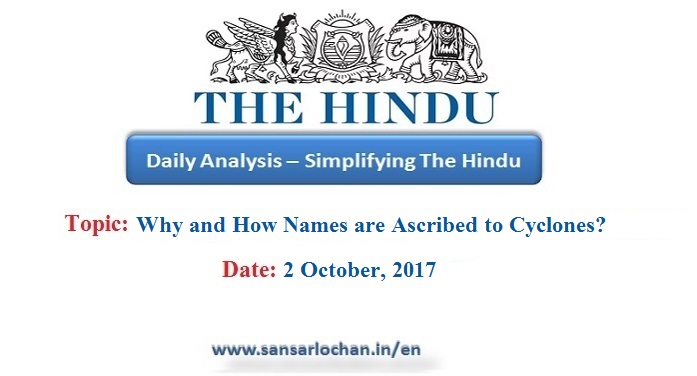Recently a hurricane named Nate has popped up in news. This hurricane is building up in the Mexico Gulf and is expected to eventually landfall in the US Gulf Cost early in the second week of October, 2017. One may be curious to know why, when and how the storms or cyclones are assigned particular names. Below is provided answers to such queries likely to emerge in the minds of the public in general.
Why are names ascribed to Cyclones?
- For historical reasons, for specifically recording the history of big storms.
- To avoid confusion when communicating with the public as more than one cyclone might exist simultaneously.
- Helps people remember the storms and their individual intensity.
Which Cyclones qualify for naming?
- Names are assigned to tropical cyclones with one-minute, three-minute or ten-minute wind-speeds of more than 65 km/hr.
- When the storms display an annually rotating circulation pattern.
History
- The official practice of naming cyclones started in 1945 for storms generating within the Western Pacific.
- Names also started to be assigned to tropical storms forming in the North Atlantic Ocean.
- Names were originally taken from World War II version of the Phonetic Alphabet.
- From 1953 onwards names were assigned from annual lists of women names.
- Naming in the case of Southern and Central Pacific began in 1953.
- Naming for the Eastern Pacific as well as Southwest Indian Ocean began in 1960.
- In 1963 the Australian region also started naming its cyclones.
- In 2011 the Brazilian Navy Hydrographic Centre started naming tropical cyclones over the South Atlantic basin.
- Now the World Meteorological Organization generates and maintains the list of all hurricane names.
About North Indian Ocean Cyclones
- In 2000 the WMO/ESCAP decided to assign names within the North Indian Ocean.
- Each member country was asked to submit a list of ten names by 2000 end.
- While all the other 7 members submitted their lists, India could not do so stating cultural and linguistic diversity in the region.
- However, in May 2004, India finally provided a list of names of cyclones.
- The first name used from the Indian list was Onil in September 2004.
- In 2017 names Maarutha and Mora were listed for Eastern Indian Ocean Cyclones.
Can a storm name be deleted from the list?
Yes. If a hurricane has once proved to be highly devastating, the World Meteorological Organisation deletes it from the annually rotating list so that people might not feel bitter when storm of this name comes back to footfall in their region. The name Katrina, a hurricane which happened in August 2010, has been dropped because this hurricane with a historic 28 foot storm surge was extremely destructive and deadly.
